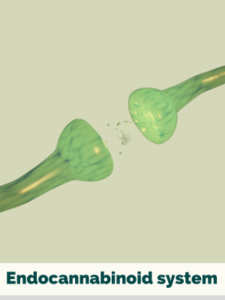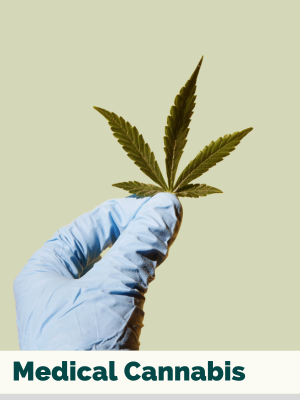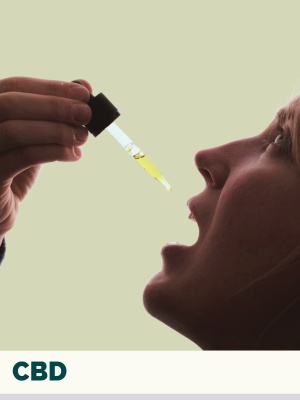Understanding the plant
The endocannabinoid system
The endocannabinoid system (ECS) is a complex cell-signalling system that plays an important role in regulating a variety of physiological processes in the human body. It consists of three main components: endocannabinoids, receptors, and enzymes.
Endocannabinoids are molecules produced naturally by the body and act as signalling molecules in the ECS. The two primary endocannabinoids identified so far are anandamide and 2-arachidonoylglycerol (2-AG). These molecules are produced on-demand in response to certain stimuli and act on the receptors in the ECS.
The two primary receptors in the ECS are CB1 and CB2. CB1 receptors are primarily found in the brain and central nervous system, while CB2 receptors are mainly found in the immune system and peripheral tissues. These receptors are activated by endocannabinoids, as well as by external cannabinoids, such as THC (tetrahydrocannabinol), the primary psychoactive component in cannabis.
Enzymes in the ECS play a crucial role in regulating the levels of endocannabinoids in the body. Two of the primary enzymes are fatty acid amide hydrolase (FAAH), which breaks down anandamide, and monoacylglycerol lipase (MAGL), which breaks down 2-AG.

Plants such as cannabis, hops and flax all produce a type of cannabinoid, known as phytocannabinoids, that interact with the ECS when consumed. The two major phytocannabinoids produced by plants are THCa (Tetrahydrocannabinolic acid (THCa) and Cannabidiolic acid (CBDa).
Over time these acid forms of cannabinoids become decarboxylated and change to the neutral form with the loss of a carboxylic acid group, making them smaller molecules. This process of decarboxylation can be speeded up by heating, burning or exposure to light. This conversion to THC and CBD enables them to interact with the ECS much more easily and has an increased affect. The acid forms still interact with the ECS, but nowhere near to the same extent as the neutral forms.
Minor phytocannabinoids, such as CBG, CBC and THCV, are all produced by the plant in the acid form. They require decarboxylation for stabilisation when being formulated into medicinal products.
The type of interaction of different phytocannabinoids with the ECS is molecule dependent and it is not as simple as binding or not!
THC interacts with the endocannabinoid system by binding to the CB1 receptors in the brain and central nervous system. THC has a similar molecular structure to anandamide, one of the body’s naturally produced endocannabinoids.
When THC binds to CB1 receptors, it can produce a range of effects, including euphoria, relaxation, and changes in appetite. These effects are the result of THC’s ability to influence the release of neurotransmitters and other signalling molecules in the brain.
In addition to its effects on CB1 receptors, THC can also interact with other components of the endocannabinoid system, including the CB2 receptors and enzymes that are involved in the synthesis and breakdown of endocannabinoids.
CBD interacts with the endocannabinoid system very differently to THC. CBD does not bind to CB1 or CB2 receptors and only has a weak affinity for the receptors. CBD interacts with other systems such as the serotonergic and opioid systems as well as the ECS. Its acts via negative allosteric modulation, which means that it can prevent or slow down THC from binding to the receptors and even help disassociate THC from the receptor after binding.
Terpenes are the molecules produced by many plants that create the aroma, and are formed through the same metabolic pathways as phytocannabinoids within the trichomes of plants. There is evidence to suggest that terpenes such as Beta-caryophyllene interact with the ECS and even enhance the effect of THC.
The importance of the ECS
Some of the key functions that the ECS is involved in:
- Regulating mood: The ECS is involved in regulating mood and emotions, and when not managed effectively it has been implicated in the development of conditions such as anxiety and depression.
- Pain sensation: The ECS is involved in regulating pain sensation, and may play a role in modulating the perception of pain.
- Immune function: The ECS is involved in regulating immune function. When it is not managed effectively it has been implicated in the development of auto-immune disorders and other immune-related conditions.
- Appetite and digestion: The ECS is involved in regulating appetite and digestion. When it is not managed effectively it may play a role in the development of conditions such as obesity and irritable bowel syndrome.
- Sleep: The ECS is involved in regulating sleep, and and when it is not managed effectively it may play a role in the development of sleep-related disorders such as insomnia.
- Neuro-protection: The ECS has been implicated in neuro-protection, and it may play a role in the prevention or treatment of conditions such as Alzheimer’s disease and Parkinson’s disease.






